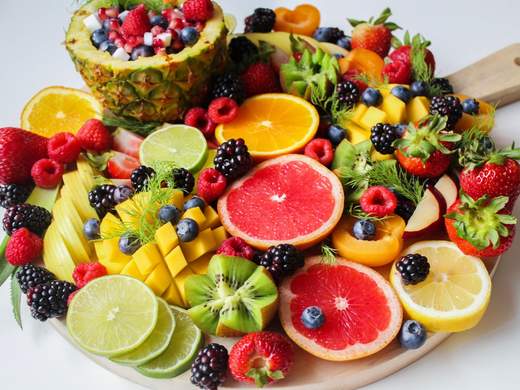Tempramed Blog
Eat your Fruit!!

We know that fruit is part of a healthy diet, and as a result of several published studies, the proof is not just in the pudding, but also in the fruits and vegetables. One such study called the EPIC Heart study, followed over 300,000 participants for an average of 8.5 years, measuring their fruit and vegetable consumption, while monitoring health parameters. The results were quite impressive; participants who consumed eight or more servings of fruits and vegetables every day were 22 percent less likely to die of heart disease than those who ate three or fewer servings. This is by no means telling you to eat eight servings of fruit, but the benefit of fresh fruit cannot be ignored.
When incorporating fruits into your meal plan, the challenge is finding fruits that have the right amount of carbohydrate, and of course taste that fit into what I like to call your total meal plan “budget”. Most of the calories in fruit come from the sugar or carbohydrate content. Remember that a serving of fruit can include fruit juice as well. That being said, keep in mind that juice has a lot of concentrated sugar and can cause blood sugar spikes I like to advise patients to eat the fruit rather than drink it because that will generally give you more fiber and satisfaction as far making you feel full. One serving of fruit is equal to one fruit choice, or one cup of mixed fruit.
Certain fruits such as berries should be avoided if you have medical conditions such as kidney disease(stones) or diverticulitis, etc. Some fruits have higher than average fat content and should be eaten more sparingly than others. One single avocado, for example, has about 12 - grams of carbohydrate and 20 grams of fat! The fat in avocados, however, is healthy fat. To avoid too many calories, 1/2 of an avocado is a good portion size. Coconut is also quite high in fat with 1 cup of shredded coconut yielding 25 grams of fat and 285 calories. Some fruits are also higher in sugar; bananas, for example have a lot of carbohydrate content compared to some other fruits such as apples. The carbohydrate content in fruit comes from glucose and fructose, which is not the same as high fructose corn syrup.
Some fruits tend to raise blood sugars quickly causing “spikes” which is why I recommend eating the whole fruit rather than drinking the juice and eating the fruit with other foods such as whole grains or nuts (protein) to blunt the glycemic effect. I like adding fruits to salads, for example. This may allow you to cut down on the salad dressing. It is also interesting to note that in general, the riper the fruit, the more concentrated sugars they contain. You may have noticed the sweetness when eating an overly rip banana, for example.
A study published in The American Journal of Clinical Nutrition in April 2012 found that consumption of blueberries and apples reduced the risk of developing type 2 diabetes. This may be because these two fruits are rich in flavonoids called anthocyanins. These may have antioxidant and/or anti-inflammatory properties.
During spring and summer, it becomes easy to find a variety of fresh fruits that satisfy our cravings. Remember mixing foods of different types makes it interesting and healthy. It is great during this season to pile healthy foods onto great salads. Experiment and share your recipes with us as we are all on this journey together. Dried fruit can be a danger because of the concentrated sugar content, which can cause fast spikes in blood glucose.
Keep in mind that a registered dietician is one person you should try to meet with on a regular basis.
Don’t forget that at TempraMed we are here to protect you and your insulin and to keep you safe.


